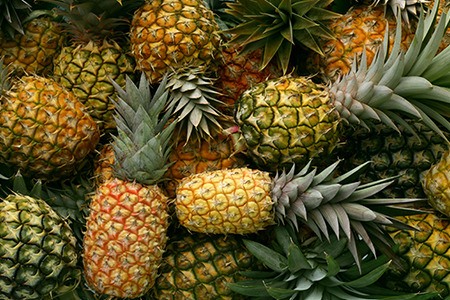Converting Pineapple Waste To Cleaning And Grease Removers

By Ojugbele Omotunde
When pineapples are prepared for consumption, almost 50% of the fruit is discarded as waste, which often ends up in landfills or improperly disposed of, contributing to environmental degradation. The fowl smell that oozes out of this waste can also constitute health hazards for residents in areas where they are disposed of.
The high moisture content in pineapple waste poses a significant challenge for solid waste processing centers like incineration plants, making proper disposal a difficult task.
An enzyme cleaner can be created using discarded pineapple peels and fruit waste. By fermenting these pineapple remnants, a powerful cleaning solution that aids in maintaining a clean and sanitized environment is created.
Studies reveal that the process begins by collecting the discarded pineapple peels and fruit waste, preventing them from burdening the environment. Through fermentation and careful filtration, the enzymes that possess impressive cleaning properties is extracted.
This natural and biodegradable enzyme cleaner is then utilized for various cleaning purposes, such as removing stains, odors, and grease.
This enzyme cleaner can be used for various cleaning purposes, such as removing stains, odors, and grease.
It is important to dilute the enzyme cleaner with water before use. A typical dilution ratio is 1 part enzyme cleaner to 10 parts water, but can be adjusted based on the cleaning task.
Ingredients:
• 10 liters = 10kg of water (10 parts)
• 3 Kg of pineapple waste (3 parts)
• 1 Kg of brown sugar (1 part)
• Coconut oil or corn oil (optional, for additives)
Equipment:
• Clean, used 18-liter engine oil drum or a large container
• Stirring utensil
• Fine mesh or cheesecloth for filtering
• Empty bottles for storage
Instructions:
1. Clean and sanitize the 18-liter engine oil drum or container thoroughly to ensure a clean working environment.
2. In the drum, combine 10 liters of water and 1 kg of brown sugar. Mix well to ensure all ingredients are evenly distributed. Then add 3 kg of pineapple waste.
3. Stir the mixture daily using a stirring utensil. This helps in the fermentation process and allows the enzymes to develop. Maintain the mixture’s temperature at around 25-30°C (77-86°F) during the fermentation period.
4. Continue stirring the mixture daily for a period of 3 months. This duration allows for optimal enzyme production. Make sure to cover the container with a lid or cloth to prevent any contaminants from entering.
5. After 3 months, the enzyme solution is ready to be filtered. Use a fine mesh or cheesecloth to strain the mixture and remove any solid residue. This will result in a clear enzyme solution.
6. If desired, add additives like coconut oil or corn oil to enhance the cleaning properties or fragrance of the enzyme cleaner. Start with small amounts (e.g., 1-2 tablespoons) and adjust according to your preference. Mix well after adding the additives.
7. Transfer the filtered enzyme cleaner into empty bottles for storage. Make sure the bottles are clean and sterilized before use. Seal the bottles tightly to prevent air or contaminants from entering.
After the enzyme extraction process, the solid residue left behind can be repurposed as fertilizer. This waste-to-fertilizer transformation ensures that every part of the pineapple waste is utilized, minimizing its impact on the environment.
